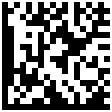 Why do we sometimes like to re-invent the wheel? Maybe that’s still okay if you’re making a better wheel, but what’s the point of driving up hype on yet another wheel, or worse, an inferior wheel?
Why do we sometimes like to re-invent the wheel? Maybe that’s still okay if you’re making a better wheel, but what’s the point of driving up hype on yet another wheel, or worse, an inferior wheel?
Case in point: ZapCode from Singapore Press Holdings. It’s basically a 2-D bar code. How very fascinating. But hey, 2-D bar codes have been around for like over a decade or two. The most popular ones in use today are Data Matrix and QR code, developed in 1989 and 1994 respectively.
So you see, I find it rather amusing to see what ZapCode is trying to achieve, especially after you find out more about it.
We’re all familiar with ordinary bar codes… seen them as UPC labels on supermarket products, ISBN labels on books, etc. Those are single-dimension codes. 2-D codes are, well, two dimension, so they actually look like matrix codes. They have the advantage of representing more information in the same amount of space, feature error detection and correction (i.e. they can tolerate moderate amount of image imperfections and still produce the correct output).
What is different about ZapCode? Well it seems basically that they add colour into the mix. Sounds ingenious. But wait… for ZapCode to work, the scanner application needs Internet access to talk to a server to figure out what that code means. Oh, how dumb can that be. Normal bar codes, Data Matrix codes and QR Codes all encode the information within themselves. They don’t require consultation with a central server to decode the message represented by the codes.
Does it get more dumb? While bar codes, Data Matrix codes and QR Codes are free to use (print them and display them anywhere you like, freely), ZapCode is licensed. You need to pay to use ZapCode, at up to $750 per 7 days.
Just for interest, the code in this post is the Data Matrix representation for the URL https://zitseng.com/. You can get popular readers from the links listed at Nokia Mobile Codes. I am quite pleased with the Kaywa reader.
So… what is the whole point of ZapCode?
View Comment Policy